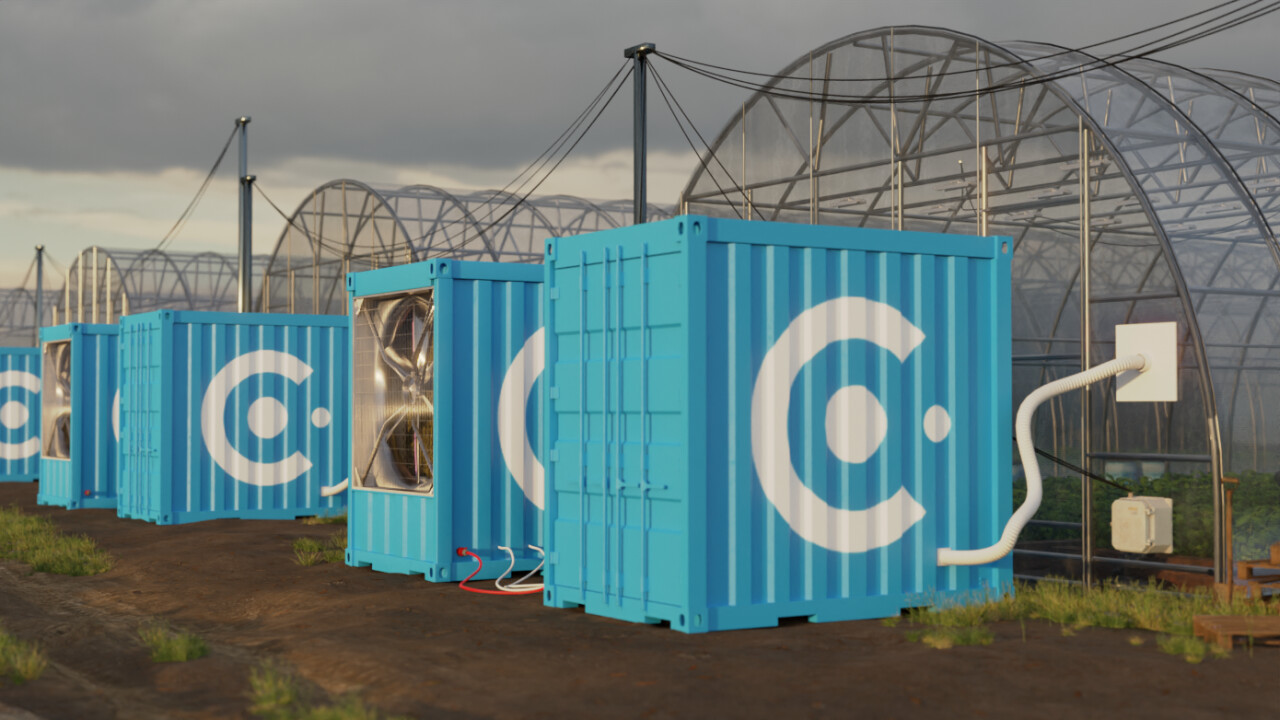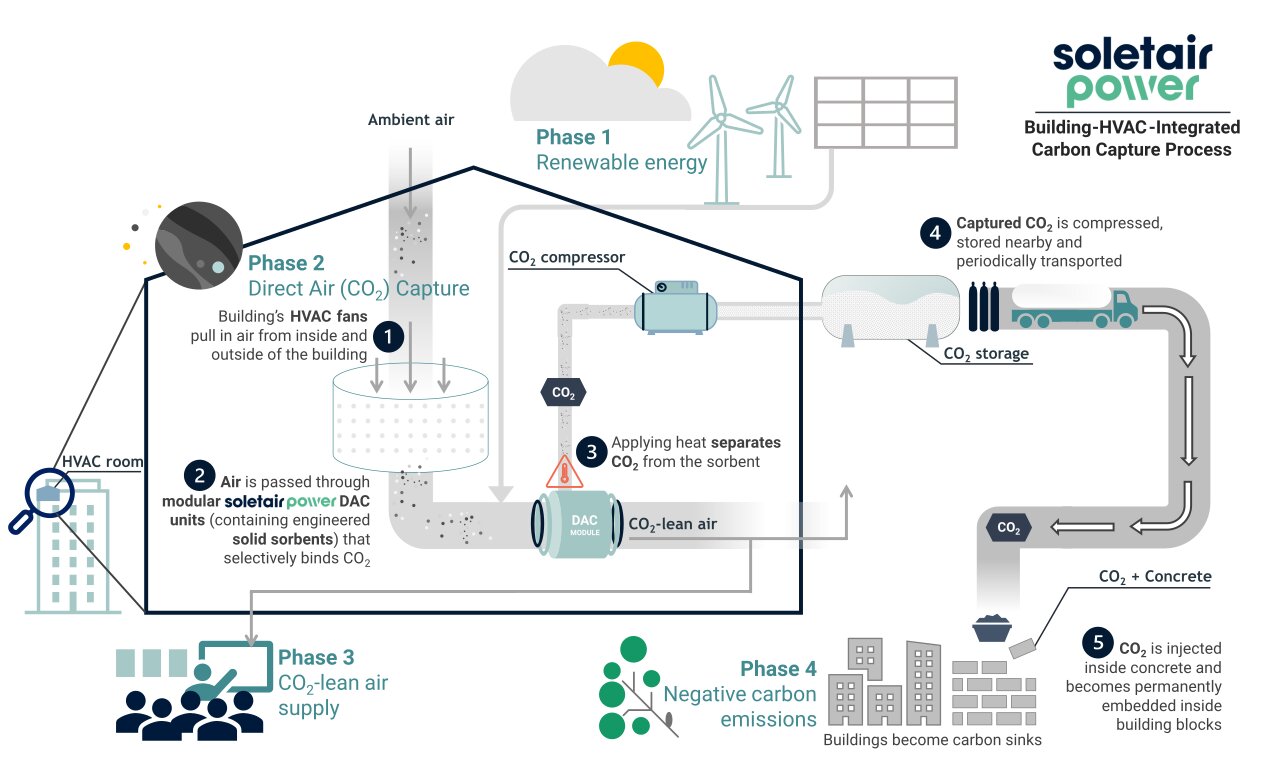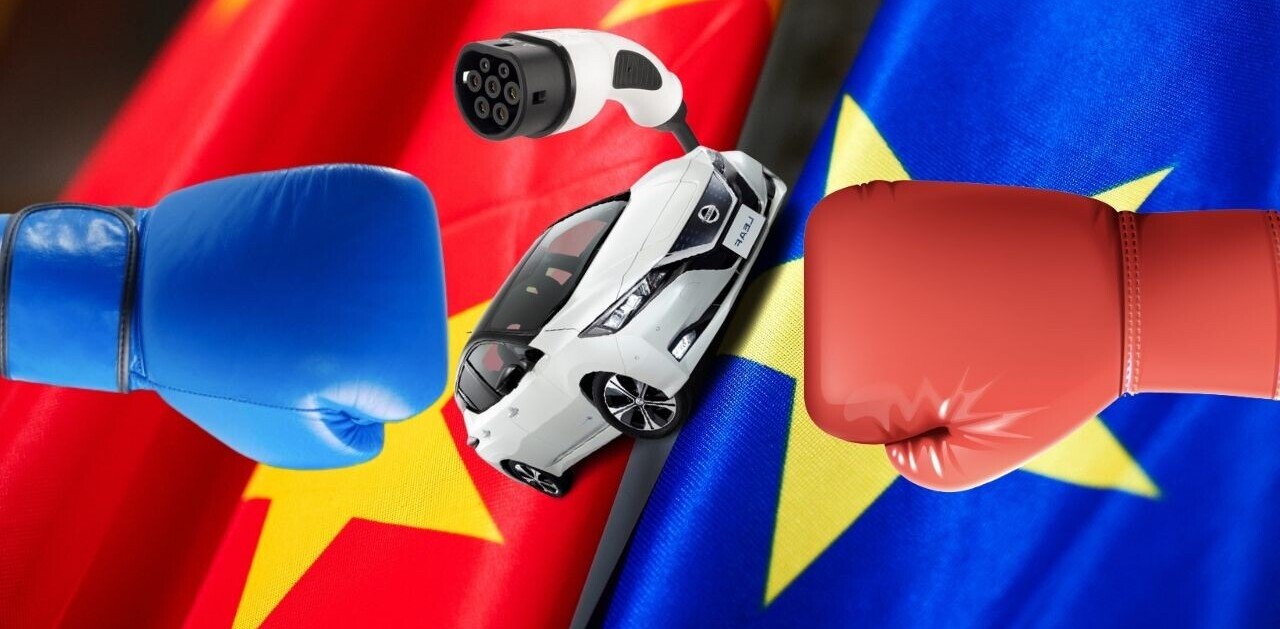
When Russia invaded Ukraine in February last year, work stopped at thousands of Ukrainian businesses – including carbon capture-focused startup Carbominer.
As tanks approached the capital Kyiv, inhabitants of the city, including employees of the company, were forced to flee for their own safety.
Among them was Viktoria Oseyko, chief marketing officer, and her father Nick, founder and chief executive officer of Carbominer. But Ukraine soon retook control of the area.
“When the Russian forces were kicked out of the Kyiv region, it was like three or four weeks and the managing team decided to get back,” explains Oseyko.

She and her colleagues have since completed a pilot trial of their machine that can capture CO₂ from the air so that it can be piped into greenhouses. This heightens plant photosynthesis, which helps farmers grow crops.
Carbon capture could prove essential component to halt pipeline warming
Carbominer is just one among many eclectic startups in Europe racing to develop technology that can capture carbon dioxide, a greenhouse gas that accounts for 66% of global warming.
Although reducing emissions is generally viewed as the key to tackling climate change, the UN, in a report published last month, highlighted that CO₂ removal might be necessary if the world is to achieve net zero emissions and limit warming to 1.5˚C above pre-industrial levels. This is due to what is called committed warming – the future warming in the pipeline as a result of the greenhouse gases we have already emitted.
It takes time for a shift in energy balance to show up. This means that even if we were to stop emitting CO₂ and methane – the leading contributors to climate change – tomorrow, global temperatures would still keep rising as the gases linger in the atmosphere.
New EU location to circumvent geopolitical challenges
The machines designed by the 10-strong team at Carbominer are still in development but Oseyko says that, by the end of the year, they hope to have a device that can capture 46 tonnes of CO₂ annually.
This is fairly small-scale but the firm, which has raised $900,000 (€822,000) in funding to date, hopes that it will be able to provide captured CO₂ to agricultural customers at a relatively low cost.
“We are going to place the machine on site and then bill per usage of CO₂,” explains Oseyko.

She adds that among the challenges faced by Carbominer, and many other Ukrainian companies, is the difficulty of importing materials into the country at present. And the fact that, under martial law, male members of staff cannot currently leave Ukraine, which makes engaging with the industry and visiting potential clients difficult. To mitigate this, the firm plans to open an office in neighbouring Poland this year, where Oseyko will be based.
Carbominer’s device consists of two linked machines. One has a large fan that draws air towards a sorbent, which captures the CO₂, and the other machine uses electrochemistry to release the CO₂ again when needed.
But one of the key difficulties with direct air capture systems is the need to move air around in order to get at the CO₂ within it – this requires energy. Oseyko says that, when fossil fuel-based electricity is used to power Carbominer’s system, it stops being carbon negative — but the firm intends to use renewable energy only.
Hitching a ride on existing air flow
In Finland, the team at Soletair Power has been thinking about how to get around the energy consumption issue.
“You need to move quite a lot of air in order to capture the CO₂. In buildings, that air is already moving,” says chief executive officer Petri Laakso.
Soletair Power’s carbon capture tech essentially piggybacks on existing ventilation systems in buildings, which transport indoor air – rich in CO₂ breathed out by occupants. The firm has 10 employees and has received €1.5 million in funding to date, besides an undisclosed amount in grants.
The amount of CO₂ captured depends on various factors including the volume of air moved in each case but Laakso says systems already installed by the firm capture on the order of tens of kilos of CO₂ per day.
Will net-zero plans drive deployment?
Again, industry values the captured CO₂. Soletair Power has installed its technology in an office in the city of Vaasa, Finland, where the trapped CO₂ is eventually used in the manufacture of concrete so that it can be embedded permanently in building blocks.
“This is a valid technology,” says Dawid Hanak at Cranfield University. “It’s just how much you can capture and how scalable that is.”

Laakso says his firm has already installed systems in Finland and Germany and will install another this summer. While individual deployments will not capture enormous amounts of CO₂, he adds, hundreds or thousands of buildings might eventually use the tech, vastly increasing its impact.
“There are many real estate companies promising that they will be carbon net zero by 2028 and they are turning to us,” says Laakso.
The cost? It varies depending on the installation but currently a large system can remove CO₂ for about €500 to €1,000 per tonne. Many firms are hoping to slash the cost of removal to $100 (€91) per tonne or below, eventually, so that CO₂ capture becomes affordable at the scales required to reach net zero.
Competitive advantage despite efficiency concerns
Carbon capture tech has its pros and cons. Stuart Haszeldine at the University of Edinburgh notes that there are easier methods of reducing humanity’s climate impact.
“The simplest way of addressing the climate issue is actually to become more efficient and get more value out of the same energy,” he says. Insulate buildings, for instance, so they require less energy to heat.
However, reducing one’s carbon footprint will become increasingly attractive commercially, argues Haszeldine as he suggests that firms able to lower their overall CO₂ output will have an advantage in terms of revenue and perception.
Plus, direct air capture helps to address CO₂ emitters that are spread over large areas and therefore hard to control, such as farming. If you can’t catch the CO₂ reliably at source, at least you can pull it out of the atmosphere later.
Using existing farming techniques to store carbon for millenia
Even some difficult-to-decarbonise industries could soon play a bigger role in seizing CO₂. In Ireland, a startup called Silicate has come up with a way of treating agricultural land so that it draws carbon out of the air and into the ground where a chemical reaction takes place, locking it down.
Silicate currently employs five people and plans to increase the headcount to 12 by the end of this year. The company has not yet raised VC funding, but did receive several grants, including $100,000 (€91,000) as a winner of the Thrive / Shell Climate-Smart Agriculture Challenge. It’s also raised funds by selling carbon removal credits.

Maurice Bryson, founder, explains that the process relies on unwanted or waste concrete, which can be crushed into a powdery material – “like a fine snowdust”, he says. By spreading this over a field, say every four years, farmers can maintain a high (more alkaline) soil pH, which is better for growing crops.
Farmers already de-acidify their soil using a technique called liming but the difference with Silicate’s approach is that the concrete reacts with carbonic acid in the soil, removing CO₂ from the air. The substances formed by this process, bicarbonate and calcite, ought to store carbon for many thousands of years.
Reduced costs with increased investment?
The firm aims to achieve removal rates of two tonnes of CO₂ per hectare, per 10 tonnes of crushed concrete applied to such an area – during the course of one year.
“The process is very passive, once you apply it to the field it gets to work itself,” says Bryson. “A key win, we think, for us is there is a possibility for the cost to fall below that $100 per tonne [of CO₂] price point.”
While direct air carbon capture technology is still in its infancy, investment in carbon capture and storage more than doubled over the past year, reaching an all time high of nearly €6 billion in 2022. With so many startups ploughing this field, and rising urgency over reaching net zero globally, these technologies will likely have a noticeably bigger role to play in the coming years.
Update, 20/04/2023: The story has been updated to reflect the correct current headcount of Silicate (it’s five, not ten), its plans to hire more people, as well as the fact the company has raised funds by selling carbon removal credits.
Get the TNW newsletter
Get the most important tech news in your inbox each week.





